Alpha Design Labs Stratos
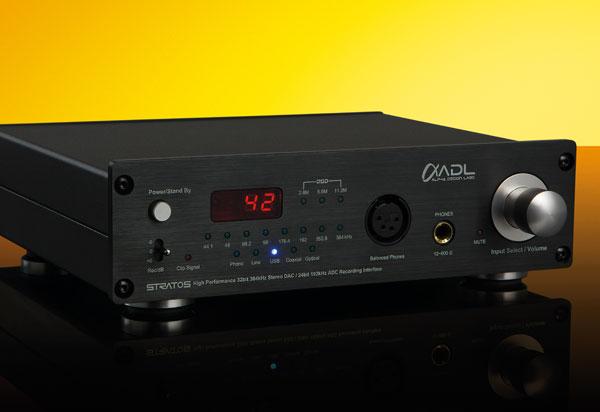
 As the successor to the popular GT40a DAC/ADC/phono stage/headphone amplifier (HFC 399), Furutech’s Alpha Design Labs Stratos supports even higher PCM resolutions for its DAC as well as playback of files up to DSD256. The GT40a was known as the Swiss army knife of audio components, and the same can be said of the Stratos, which also sports DAC, ADC, phono stage and headphone amplifier capabilities but with a more up-to-date spec, 15V DC wall-wart power supply and USB-A-to-USB-B interface cable.
As the successor to the popular GT40a DAC/ADC/phono stage/headphone amplifier (HFC 399), Furutech’s Alpha Design Labs Stratos supports even higher PCM resolutions for its DAC as well as playback of files up to DSD256. The GT40a was known as the Swiss army knife of audio components, and the same can be said of the Stratos, which also sports DAC, ADC, phono stage and headphone amplifier capabilities but with a more up-to-date spec, 15V DC wall-wart power supply and USB-A-to-USB-B interface cable.
Built around an ESS ES9018K2M SABRE32 Reference Stereo DAC, it supports PCM data rates up to 32-bit/ 384kHz together with support for DSD64, DSD128 and DSD256 where the corresponding resolution is highlighted by the rows of LEDs indicating 2.8M, 5.6M or 11.2M respectively. The internal DAC makes use of the ESS 32-bit HyperStream architecture and time domain jitter eliminator, claiming a dynamic range of up to 127dB and a total noise plus harmonic distortion figure of -120dB.
The USB 2.0 interface has high-speed compliance with DSD. It can also accept a coaxial S/PDIF or optical input. The output can be taken from a pair of RCA phonos for an unbalanced output or two XLR sockets for a balanced one.
A high-performance CS5340 analogue-to-digital converter (ADC) chip is also onboard for hi-res recordings via the line or phono stage inputs. The phono input goes via an internal preamp stage with RIAA equalisation and is compatible for both moving-magnet and moving-coil cartridges. The ADC supports sample rates up to 24-bit/192kHz and the digital output can be taken from the USB or from an optical connection. An analogue line-level output enables the Stratos to operate as a standalone phono stage if desired.
A three-position toggle switch on the front panel enables attenuation or gain settings of -6dB, 0dB or +6dB and the Clip Signal indicator lights up when overload is detected.
On the front there are two sockets for headphones – a 6.35mm stereo jack for unbalanced output and an XLR-4 balanced output. There’s a combined input selector and electronic volume control that allows the volume to be preset for each input. The volume setting is clearly shown by the red numeric display.
In order to support the higher data rates, the Stratos requires a connected computer to have an ASIO driver. Macs have this built-in, but Windows PCs require the driver to be installed. After installation, I use free Audacity software for making digital recordings with the Stratos. I set the ADL to be the default playback and recording device in the Windows Control Panel before adjusting the default recording format to two-channel, 24-bit/ 192kHz. Incidentally, by setting the Stratos as the default device, Windows automatically switches over to it whenever it is plugged in. Since recording levels are made using software, there are no adjustments to be made on the Stratos itself, apart from the signal gain/attenuator setting.
Sound quality
Having hooked up the Stratos to my hi-fi and PC, I kick off by connecting my Miyajima Kansui moving-coil cartridge to the phono input and playing Vivaldi’s The Four Seasons by the Academy of Saint Martin in the Fields, listening via Sennheiser’s HD 800 S headphone (HFC 439). The lively first movement of Winter is positively electrifying with the orchestra’s great power and authority clear to hear. The soundstage is wide and open with a refined presentation – certainly impressive for dynamic headphones. I then remove the 6.35mm adapter jack from the Sennheiser and plug it into the balanced output. The result is a slightly wider soundstage with each note of the double basses and cellos clearly identifiable, even when the rest of the orchestra is in full flow.
A CD of string quartets by Alec Roth performed by the Allegri Quartet showcases the delicate fingering of the strings in the pizzicato sections of Dancing (1) from String Quartet No.2. The energetic and lively plucking is believable, superbly clear and the four instruments occupy well-defined locations within the soundstage.
Switching to the USB input with a 16-bit/44kHz file on my PC of Cécile McLorin Salvant singing Nothing Like You, the clarity of the double bass and drums is superb with each instrument in a clearly defined location within the soundstage – as is McLorin Salvant. Connecting the line output of the Stratos to my hi-fi, I am once again bowled over by the clarity of this piece – in particular, the hi-hats, which are crisp and mellifluous. Furthermore, the balance of the piano is absolutely spot on.
To test out the DAC’s capabilities with DSD files I install the 0.6.5 version of the SACD plug-in and launch a copy of Foobar 2000 playback software (HFC 448). I install the input and output ASIO components and configure the software to play via the Furutech ASIO Driver in native ASIO – as stated in the DSD playback guide. I have three test files of the allegro from Mozart’s Violin Concerto in D major: the first is recorded in 24/192 PCM, the second in DSD64 and the third DSD128.
The PCM version treats me to a sprightly and sparkling performance that brightens up the listning room. Switching to the DSD64 file, it is difficult to identify any discernible audible differences and the resultant sound quality seems equally as good as the PCM file. Finally, with the DSD128 version the music has a touch more realism and presence. Although the difference is subtle, it is a definite step up from both the PCM and DSD64 versions.
While the Stratos is connected to my computer, I set it up to digitise a master tape at 24/192 using Audacity and saving the result as a WAV file on my PC. Connecting the output of my Studer A810 tape machine to the line input of the Stratos, I record a tape of a 2018 recording of organ music played by organist Jung-A Lee in the Walt Disney Concert Hall. Copying the WAV file onto a memory stick, I am able use my Cambridge Azur 851N network music player to play it. The quality of the digital copy made via the Stratos is excellent, from the light-hearted Hamburger Totentanz by Guy Bovet to the breath-taking Prelude in B Minor by JS Bach. All of the dynamic range is present and I am transported to the concert hall just as with the original recording.
Conclusion
Alpha Design Labs’ Stratos offers an impressively wide-reaching range of features without compromising sound quality. At £1,315 it isn’t nearly as competitive as its predecessor, but it nevertheless remains remarkably flexible at the price. NR
DETAILS
Product: Alpha Design Labs Stratos
Price: £1,315
Origin: Japan
Type: DAC/ADC/preamp
Weight: 1.3kg
Dimensions: (WxHxD) 215 x 64 x 180mm
FEATURES
● 32-bit/384kHz PCM and DSD256-capable DAC
● Digital inputs/outputs: 1x coaxial in; 1x optical in; 1x optical out; 1x USB-B
● Analogue inputs: 1x phono (MM/MC); 1x stereo RCAs (line)
● Line outputs: stereo RCAs; balanced XLRs
● Headphone outputs: 1x 6.35mm; 1x 4-pin balanced XLR
 |
Inside this month's issue: Arcam Radia A25 integrated amp, iFi Audio iDSD Diablo 2 DAC/headphone amp, Eversolo DMP-A8 streamer/DAC/preamp, Line Magnetic LM-845IA valve amp, Record Store Day Spring Drop, standmount loudspeaker Group Test and much, much more
|

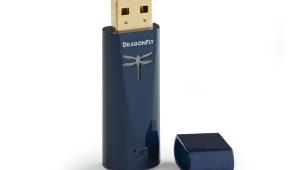
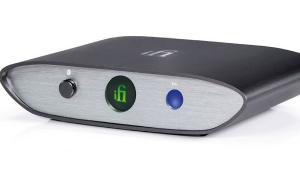




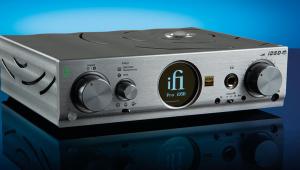


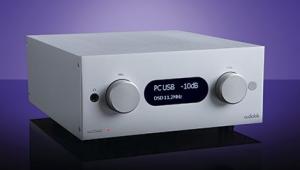
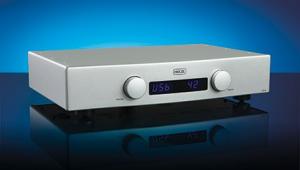
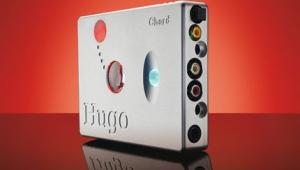
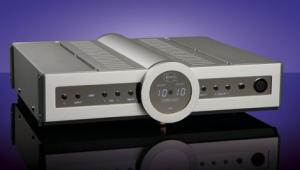

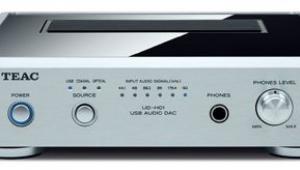
































.jpg)



